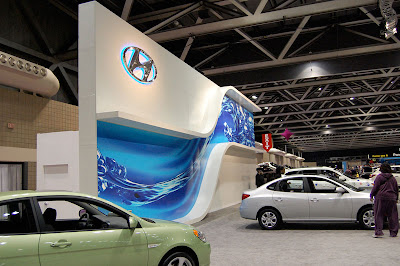
Monday, March 8, 2010
Tuesday, February 9, 2010
DP: Project Explanation & Timeline
Through my research I have learned that the only way to get out of homelessness is with strong encouragement and support from community. There are already a lot of people out there who are doing the important job of donating to homeless organizations. These places couldn’t stay in operation without generous gifts of supplies and money. But an important aspect of generosity which is commonly missing in neighborhoods and businesses is hospitality. Most people are willing to part with a few cans of food, but the love and sacrifice required to get people off the streets isn’t as easy to give up. The objective of my project is to build up community between groups of people who are separated by economic status so that strangers in need become friends in need. I want to introduce this kind of community to people who may not know it exists and help people who are looking for it to find it.
The question I have to answer is, “how can a design system influence and facilitate a supportive community and relational interaction between the homeless and the privileged class? An important part of having a successful project is meeting people who already work with the homeless. They already understand the problem, they know what works and what doesn’t, and they are a part of the existing social network that I need to utilize. Meeting people from Cherith Brook and Artists Helping the Homeless has provided some good insights. I’ve made connections with Reconciliation Services and Homeless Services Coalition but haven’t spent any time getting to know them yet. My experiments have centered around the idea of friendship and personal interaction. The most important thing to me is providing situations for people to meet and get to know the homeless. If I’m not creating these situations myself, I’m directing people to them.
The most likely design solution at this point is some form of printed material. One of my goals is to create something that will be used. I don’t want to be limited by by my own resources but at the same time, if this project doesn’t get funded by someone else, I want to be able to create it myself. Kar Woo from Artists Helping the Homeless receives a lot of financial support for his projects so there might be a good chance that he will be able to help me find funding if he has confidence in my idea.

Wednesday, January 27, 2010
DP: prototype brainstorm
Could something tell homeless families where to get help and tell helpers how to find homeless families?
What is a design system? What kind of system will bring these separate groups of people together?
How can I link helpers and homeless through commonalities?
How can this system cause both parties to be humbled enough to seek help / spend time together?
Could it be a public event? Could it be a personal event in a home setting?
What is the setting of this interaction? Is it a central location? or a network of homes/families that are open to homeless visitors?
Homeless people share with each other. They band together. They take care of each other. They may be a viable network through which information could be passed.
What do families need? Clothes / Food / beds / jobs / homes / toys / showers
Does this system help families find what they need? Does this system help them survive on the street? Or get a job? Do I want to help them get homes? Maybe Any! Maybe it all has to do with connecting people—creating community. The resources will follow the connections. This project is not a fundraiser, but a community builder—families meeting families, sharing stories, time together, growing close, taking care of each other.
How do I convince the wealthy that this is worth their time? To be sacrificial? Eating together, sharing a meal?
Find out what Cherith Brook is all about. Either I might help them and build them up, or work off of them as a model and expand on it.
Create an identity for the Cherith Brook community? Promotional material for those wanting to help and those in need? Promoting an idea? Guerilla?
Cherith brooks lists urgent needs on their blog. How can I make this information public and persuasive? How can their needs be met without it being more than a drop-off but an actual community exchange?
DP: Researchable Question
How can a design system create and persuade interaction and compassion between the wealthy and homeless community?
My revised question
How can a design system influence and facilitate a supportive community and relational interaction between homeless families and compassionate citizens?
Friday, December 11, 2009
GOOD: Design: A New Engine for Society

GOOD just launched a new series with Frog Design on how design can help solve the problems of the next decade. Here is the first article.
TED Talk: Transition to a World Without Oil
In this TED Talk, Rob Hopkins talks about this remarkable and relatively short era we are in the middle of right now called the "petroleum interval" where we've discovered this extraordinary material that contains energy equivalent to 5 weeks of manual labor in a single liter, and we have based our entire way of life around it.
He talks about the fantastic stories told before the era of cheap oil and how these fantasies have become realities in the oil age but we don't appreciate how astonishing these things are. The 7-league boots that take you 21 miles in one stride (easy jet), the magic porridge pot that produces an unlimited amount of porridge with a magic word (wal-mart), and the shoe elves that make shoes while we're asleep (china).
As we are discovering, we will not have oil in perpetuity. For every 4 barrels we consume, we discover one. In the 1930s we were getting 100 units of energy for every unit we put in to extract it. Today, that return is down to 11/1.
He gives a few popular ideas about how we are going to get through this. Some people expect we are going to hit a wall and everything is going to collapse. But our favorite idea as designers is that technology is going to fix everything, that we will side-step the constraints by inventing our way out of the energy crisis.
Regardless, our oil dependency is going to have to change. What Rob proposes as a solution is not sustainability as he once expected, but resilience within individual communities; communities who assess the changes and respond to them resourcefully. Each community's response will look different, but examples of this are local currencies, a parking lot turned into a productive garden, some kind of "plan B." What will we do when we don't have oil as a primary energy resource? Are we going to assume that someone is working on the solution for us or are we creating our own solutions that transition us out of dependency?
This reminds me of Vauban, Germany, which I researched for my branding project, and other eco-cities being proposed globally. They are small-scale ideas of self-sustaining, renewable communities. Our way of life is not permanent and it's an idea that I am quickly getting used to. I'm starting to accept that we may very soon have to let go of some of the things that make us comfortable.
Thursday, December 10, 2009
Give Good: Invisible Children stop-motion
Give Good



